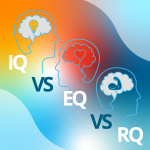Overview
Educator Longevity Programs: Reward your top talent and/or your new hires for participating in this groundbreaking program to improve longevity and propagate psychological fortitude.
The overarching goal of this group is retention. Through stress inoculation, faculty will use our unique Resilience Rubric, to prepare for the challenges of being an educator, causing burnout. Each member will construct a unique Prosilience Plan that helps identify and remediate risk factors, generated in both their personal and professional lives.
Two Options
Option #1 (Trailblazers): Each school identifies faculty with the greatest potential for success. These faculty members are led through a six month program to develop skills to help them become more successful. These faculty members will resonate success, inspiring others to greatness. In the second year, Resilience Advocates (RA's) will learn how to bring this work into their classrooms to promote student success.
Option #2 (New Hires): Faculty in their first two years of employment with the district. Our meetings will occur on the last Tuesday of each month (holiday exceptions), from 2:30-3:15, lasting approximately 45 minutes. During this time, an expert facilitator will guide the group through a combination of content and process, helping form an invaluable support network.
The work of growing our resilience, or Prosilience, can be achieved through the following objectives:
- Identifying, understanding, expressing and negotiating our needs. Differentiating needs from wants, fears, impulses or drives, so we can discern acting from reacting.
- Learning when we operate out of fear, employing our protective mechanisms, diverting our resources away from getting our wants/needs met, so we can be more intentional.
- Building a meaningful support system with relationships that energize us.
- Learning how to adapt so we can rebound from adversity, problem solve and preserve energy.
- Minimize chronic/acute stress so we can dedicate our resources to meeting our needs. Stress inoculation or building our tolerance for discomfort is key.
- Improve our wellness activities so we are efficiently growing our physical health.
- Gaining skills/ proficiencies in getting our needs met (or SEL).
- Developing tools for organizing, motivating, disciplining and engaging with students for a rewarding teaching/learning environment.
- Prioritizing values to guide us during times of duress.
